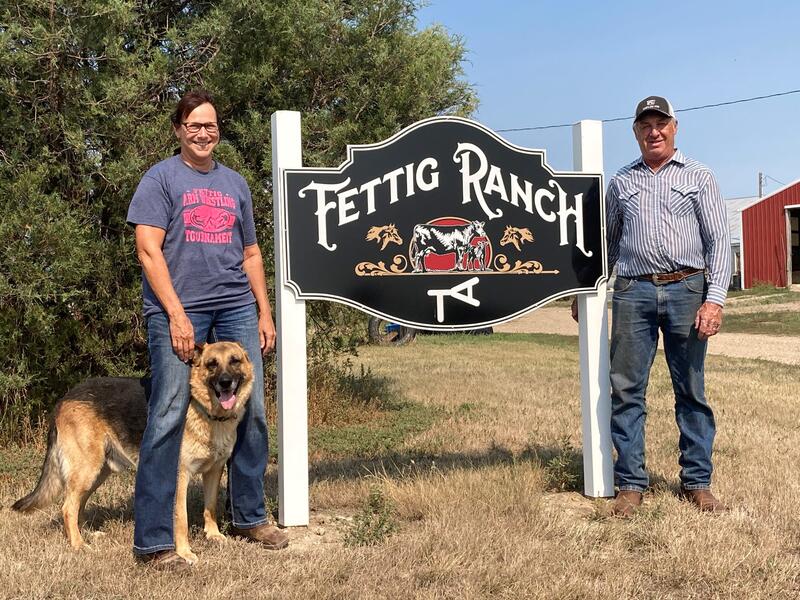Thanks to one woman’s insight to get yearly mammograms, her doctors were able to treat an aggressive cancer found in her breast.
Arlene Fettig had no history of breast cancer in her family but recognized the importance of getting yearly screenings.
“I guess I’m a rule follower and I listen to what my doctor says,” said Fettig. “I just went in for yearly screenings because that’s what you’re supposed to do.”
In 2019, Fettig’s doctors discovered a lump in her right breast that could not be felt or seen. It was an aggressive form of cancer that required immediate attention.
“I thought of my kids and my husband right away. I wasn’t thinking about myself, really, because I didn’t really know much about how bad it was,” said Fettig. “When they said it was breast cancer (I thought) I have to be strong. I can’t break down in front of them.”
Because the cancer was spotted early, her doctors were able to perform an immediate reconstruction on her breast during her mastectomy and radiation was not needed.
Find cancer treatment options: Breast surgery at Sanford Health
“Immediate reconstruction is a relatively novel procedure that allows certain patients to avoid more extensive or time-consuming procedures and have an implant placed directly at the time of the mastectomy,” said Theresa Hegge, M.D., a plastic surgeon specializing in breast reconstruction at Sanford Clinic in Bismarck, North Dakota. “It has dramatically changed the patient experience and time for recovery in breast reconstruction by allowing the patient to walk out of the operating room with their reconstruction.”
“Arlene was able to have breast reconstruction surgery at the time of her mastectomy. Usually, this procedure allows us to do reconstruction … unfortunately, Arlene has some complications with her skin being thin on one side and we had to remove the one implant to allow that to heal,” said Dr. Hegge. “After healing … we were able to place a tissue expander to stretch that skin for us. We then were able to complete her reconstruction using a breast implant to match to opposite side.”
Now, as she celebrates her third anniversary of being cancer-free, she and her husband stay busy keeping everyone in line on the family ranch and continues to advocate for preventive screenings.
“It really isn’t that hard to go in and get screened,” said Fettig. “Just go in and get tested.”
“Screening mammography is the most effective tool available to detect breast cancer before symptoms appear,” said Christina Tello-Skjerseth, M.D., a radiologist at Sanford Bismarck. “Early detection of breast cancer can mean more treatment options and typically increases the chances of having the best possible outcome.”
“If we would have caught her cancer much later, she would have likely needed other treatments like radiation or chemotherapy,” said Dr. Hegge. “It can also mean more invasive surgery is needed to complete the treatment.”
Removing breast cancer
A mastectomy removes the entire breast, and depending on where the cancer is found and its severity, some women will have both breasts removed. There are many different types of mastectomies with varying degrees of removal.
- A nipple sparing mastectomy removes all the breast tissue but leaves the breast skin and nipple area intact. For eligible patients whose cancer has not spread to the nipple area, a nipple-sparing mastectomy is a great option that provides considerable benefits for women included the breast looking almost unchanged.
- A modified radical mastectomy removes the whole breast, a portion of the lymph nodes under your arm and often the lining over your chest muscles. A small portion of muscle may need to be removed in select cases depending on the location of the cancer.
- A simple mastectomy removes the whole breast and often the lining over your chest muscles.
- A radical mastectomy is completed in extremely rare cases and removes the whole breast, most to all of the lymph nodes under your arm, the lining over your chest muscles and the chest wall muscles under the breast bone.
About Edith Sanford Breast Center
Edith Sanford Breast Center is changing the future of breast cancer care and research. A national nonprofit organization established through a generous $100 million gift. Edith Sanford Breast Center has over 49 locations and 150 providers in South Dakota, North Dakota and Minnesota and is an integrated part of the Sanford Health organization.
The expert team at Edith Sanford Breast Center includes physicians, researchers, nurses and more all working together to accelerate lifesaving discoveries and raise the standard of breast cancer care. Through the use of personalized medicine, we are on the path of revolutionizing prevention, early detection, diagnosis, treatment and survivorship. Our mission is to unlock each woman’s genetic code to advance treatment and end breast cancer in future generations.
Edith Sanford Breast Center is accredited by:
- Commission on Cancer Accreditation
- Quality Oncology Practice Initiative Certification
- ANCC Magnet Recognition
- Breast Imaging Center of Excellence – Breast Ultrasound
- Breast Imaging Center of Excellence – Mammography
- Breast Imaging Center of Excellence – Stereotactic Breast Biopsy
- National Accreditation Program for Nuclear Medicine
- National Accreditation Program for Breast Centers
- National Accreditation Program for Breast MRI
- National Accreditation Program for Radiation Oncology
Learn more
- Podcast: Preparing for your first mammogram
- Mammography: Answers to common questions
- Breast cancer survivor shares her story
…
Posted In Bismarck, Cancer, Cancer Screenings, Imaging, Rural Health
